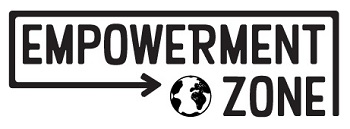Since the supermarket price wars, many consumers have made a conscious decision to support Aussie dairy farmers by choosing branded milk (such as Dairy Farmers, Pura, Pauls) over the supermarket home brands.
We think that by choosing the more expensive milk we are helping the farmers. It's an important gesture, showing with our purchasing power that we believe the production of milk has a true value of more than $1 per litre. Unfortunately, according to The Checkout on ABC1 by buying those big brand names we're not helping the dairy farmer. The farmers are actually paid the same for the milk because the milk that ends up in either branded or home brand bottles is bought from the same farms and is processed in the same plants (by Lions and Parmalat) - it's just different packaging. All we're doing by paying more for these big brands is increasing the profit Coles and Woolworths make on the same milk!
This episode of The Checkout explains, recommending that the best way to help dairy farmers is to buy milk from collectives or direct from a farmer who produces the milk in your region (see a list below).
For those that can, the benefits of buying from local dairy farmers include:
- the milk is less processed and more fresh (retaining more of the nutritional value)
- it has travelled less food miles
- we know the actual farm that produced the milk and thus we can learn more about animal welfare and sustainability practices
- they tend to offer more unique choices such as unhomogenised and glass bottles.
At Barambah Organics all the calves that are born on our property stay within our care. Our calves are not considered by us to be waste products. At the age of 6 months we take the females and males to our other properties... No Barambah calves are sent to the abbatoir. We often get asked the question "When are the calves separated from their mothers?" Each calf is different and needs to be individually assessed and monitored after birth... The calf is not separated from its mother until it is truly on its way and fit and healthy.
We started a list of dairy farmers direct milk that may be local to you, but then we found this very comprehensive list by Flavourcrusader.com Thank you to them for the research to help us all. We have not assessed the sustainability or animal welfare practices of the below.
SE Qld
Scenic Rim 4Real Milk (only distributes within a two hour drive of their South East Queensland farm)
Barambah Organics
Maleny Dairies (seen at FoodWorks)
Cooloola Milk (Gympie region, seen at IGA - Rainbow Beach)
Cooloola Jersey Organic milk (available at Food Connect)
SA
Bd Paris Creek Farm
Fleurieu Milk Co
Alexandrina Milk
NSW
Liddels for lactose free milk (Murrary Goulburn Co-operative)
Devondale long life (Murray Goulburn Co-operative)
Norco (seen at HIlls Bakery - Ferny Hills, Megafresh - Carine, Woollies - Annerley)
Country Valley (Picton)
VIC
Organic Dairy Farmers
WA
Brownes
For unhomognised and unpasteurised (straight from the cow) you can consider raw milk marketed in Australia as "bath milk" (i.e. apparently for bathing in, not for human consumption). Heavenly Bath Milk from the Northey Street Markets in Brisbane and Cleopatra's Bath Milk at organic/wholefood stores.
As Flavourcrusader.com says:
While supermarkets compete over the price of milk, dairy farmers step out of the ring and compete with quality. For distinct flavour, seek low temperature pasteurisation and milk from a single-origin herd. For creaminess, look for Jersey and Guernsey cows, or unhomogenised milk. For a better world, support those who cultivate rich soil, minimise plastic and go above and beyond for animal welfare.













